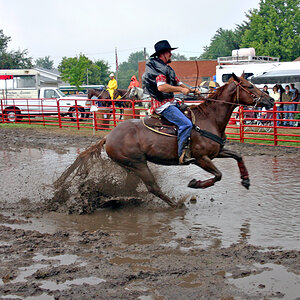Navigation
Install the app
How to install the app on iOS
Follow along with the video below to see how to install our site as a web app on your home screen.

Note: This feature currently requires accessing the site using the built-in Safari browser.
More options
You are using an out of date browser. It may not display this or other websites correctly.
You should upgrade or use an alternative browser.
You should upgrade or use an alternative browser.
What is mean by 'raw' ?
- Thread starter Robbie
- Start date
- Joined
- Dec 16, 2003
- Messages
- 33,896
- Reaction score
- 1,853
- Location
- Edmonton
- Website
- www.mikehodson.ca
- Can others edit my Photos
- Photos NOT OK to edit
High end digital cameras can save the images in a 'RAW' file format. Canon's files are file.CR2 and I think Nikon's are file.NEF
Basically it's a type of file that is the raw data from the camera. JPEG is another type of image file...but when saving the image as a JPEG, the camera compresses the data (causing loss). Most digi-cams also apply things like sharpening and saturation to the image when they save it at a JPEG image.
RAW files allow us to make some changes to the image and convert it to a more common image file type...like JPEG, TIFF or PSD etc. The camera does not apply things like sharpening to the RAW file...which lets us do it with software on a computer. It basically give the photographer more control over the process.
Basically it's a type of file that is the raw data from the camera. JPEG is another type of image file...but when saving the image as a JPEG, the camera compresses the data (causing loss). Most digi-cams also apply things like sharpening and saturation to the image when they save it at a JPEG image.
RAW files allow us to make some changes to the image and convert it to a more common image file type...like JPEG, TIFF or PSD etc. The camera does not apply things like sharpening to the RAW file...which lets us do it with software on a computer. It basically give the photographer more control over the process.
Robbie
TPF Noob!
- Joined
- Jan 16, 2007
- Messages
- 50
- Reaction score
- 0
- Can others edit my Photos
- Photos OK to edit
ok, that helps, but how do you know if an image is 'raw' ? Is there a 'raw' option ? Or are different cameras just programmed in different ways ?
If I were to get a Canon EOS 400D, would the images taken be 'raw' ?
If I were to get a Canon EOS 400D, would the images taken be 'raw' ?
Peanuts
TPF Noob!
- Joined
- Jun 16, 2005
- Messages
- 2,905
- Reaction score
- 85
- Location
- Canada
- Website
- www.brittanyesther.com
- Can others edit my Photos
- Photos NOT OK to edit
You can choose whether to shoot in RAW, RAW and JPeg, or varying levels of quality of JPEG on the 400D
cosmonaut
No longer a newbie, moving up!
- Joined
- Oct 12, 2006
- Messages
- 1,122
- Reaction score
- 98
- Location
- North Georgia
- Website
- www.gregmccary.com
- Can others edit my Photos
- Photos NOT OK to edit
If you shoot RAW you will need a conversion software. Raw Shooter is a free download and works very well. RAW files are not viewable with Windows or PhotoShop without the right plugin...
Cosmo
Cosmo
Sw1tchFX
TPF Noob!
- Joined
- May 3, 2006
- Messages
- 7,499
- Reaction score
- 478
- Can others edit my Photos
- Photos NOT OK to edit
RAW files are sensor dumps.
It's what your sensor sees and that's it. absolutly nothing else is added. Unlike Jpegs, most RAW files are uncompressed which allow more highlight and shadow latitude. And unlike Jpegs, RAW files don't have any 'enhancments' you may have selected in camera.
It basicly allows you to take advantage of the camera and allows you to make real edits on a better screen and not the dinky LCD.
It's what your sensor sees and that's it. absolutly nothing else is added. Unlike Jpegs, most RAW files are uncompressed which allow more highlight and shadow latitude. And unlike Jpegs, RAW files don't have any 'enhancments' you may have selected in camera.
It basicly allows you to take advantage of the camera and allows you to make real edits on a better screen and not the dinky LCD.
Tyson
TPF Noob!
- Joined
- Nov 19, 2006
- Messages
- 652
- Reaction score
- 1
- Location
- Newark Ohio
- Website
- www.tls-photo.com
- Can others edit my Photos
- Photos NOT OK to edit
So one should shoot in raw format and edit it then turn it into a jpeg?
once it is converted will there be data or image quality loose?
once it is converted will there be data or image quality loose?
asr84
TPF Noob!
- Joined
- Jan 18, 2007
- Messages
- 46
- Reaction score
- 0
- Location
- CH, Lausanne
- Can others edit my Photos
- Photos OK to edit
...
Basically it's a type of file that is the raw data from the camera. JPEG is another type of image file...but when saving the image as a JPEG, the camera compresses the data (causing loss). Most digi-cams also apply things like sharpening and saturation to the image when they save it at a JPEG image.
...
Yes Tyson, there is loss if it is converted within the camera.
Converting through a computer, I think loss depends on the software you use to convert the raw image??
harkain
TPF Noob!
- Joined
- Jan 26, 2007
- Messages
- 34
- Reaction score
- 0
- Website
- www.studioelouisville.com
- Can others edit my Photos
- Photos NOT OK to edit
When you take picture with your digital camera and it outputs a jpg, the sensors collect the data, and then the camera performs a number of operations, including but not limited to, assigning a color profile, white balance, various compressions techniques, and more.
When you capture a raw image, you aren't really creating an image. A raw file is not truly an image like a jpg. A raw file is a collection of data representing all of the data captured by the red, green, and blue sensors. When you preview a raw in your LCD, you are seeing a jpg interpretation.
What are the magnificient benefits of RAW?
It does not suffer from any automatic processing within the camera. You bring home everything that your camera saw through the lense at your ss, ap, and iso. With the right software, you select all of the processing yourself.
You can manually set the white balance and choose a color profile. Normally, adjusting these in a jpg would cost you some data.
You have a richer set of color data to work with and can make strong changes before converting to jpg. Each time you alter a jpg, you are losing color data. So getting as much corrected in RAW as you can will leave you with a higher quality image in the end.
A cool thing with Adobe Camera Raw plugin... If you blow out some of the detail, ACR can attempt to recover that lost detail by adjusting the exposure slider. This is not possible with a jpg. I've saved many images by doing multiple RAW conversions with different settings and then blending the images in Photoshop.
My wife and I started shooting in RAW two years ago and we love it. It adds additional work to your workflow, because you have to convert your images to another format, such as jpg, before you can really do anything with them. But for high ISO images, where noise must be removed, RAW provides more data to work with and generally results in a higher quality editted image than would have been possible with a jpg.
When you capture a raw image, you aren't really creating an image. A raw file is not truly an image like a jpg. A raw file is a collection of data representing all of the data captured by the red, green, and blue sensors. When you preview a raw in your LCD, you are seeing a jpg interpretation.
What are the magnificient benefits of RAW?
It does not suffer from any automatic processing within the camera. You bring home everything that your camera saw through the lense at your ss, ap, and iso. With the right software, you select all of the processing yourself.
You can manually set the white balance and choose a color profile. Normally, adjusting these in a jpg would cost you some data.
You have a richer set of color data to work with and can make strong changes before converting to jpg. Each time you alter a jpg, you are losing color data. So getting as much corrected in RAW as you can will leave you with a higher quality image in the end.
A cool thing with Adobe Camera Raw plugin... If you blow out some of the detail, ACR can attempt to recover that lost detail by adjusting the exposure slider. This is not possible with a jpg. I've saved many images by doing multiple RAW conversions with different settings and then blending the images in Photoshop.
My wife and I started shooting in RAW two years ago and we love it. It adds additional work to your workflow, because you have to convert your images to another format, such as jpg, before you can really do anything with them. But for high ISO images, where noise must be removed, RAW provides more data to work with and generally results in a higher quality editted image than would have been possible with a jpg.
asr84
TPF Noob!
- Joined
- Jan 18, 2007
- Messages
- 46
- Reaction score
- 0
- Location
- CH, Lausanne
- Can others edit my Photos
- Photos OK to edit
If you shoot RAW you will need a conversion software. Raw Shooter is a free download and works very well. RAW files are not viewable with Windows or PhotoShop without the right plugin...
Cosmo
Raw Shooter works very good.
Selandriel
TPF Noob!
- Joined
- Jan 30, 2007
- Messages
- 4
- Reaction score
- 0
- Location
- Nashville TN
- Can others edit my Photos
- Photos NOT OK to edit
So what you are saying is the quality of raw images is better? Jpegs are easier to work with and when I convert them, quality is lost?
Selandriel
TPF Noob!
- Joined
- Jan 30, 2007
- Messages
- 4
- Reaction score
- 0
- Location
- Nashville TN
- Can others edit my Photos
- Photos NOT OK to edit
P.s the camera I'm looking to get says it has RAW+Jpeg
DocFrankenstein
Clinically Insane?
- Joined
- Apr 29, 2004
- Messages
- 1,646
- Reaction score
- 6
You guys don't know what you're talking about.
It's when you're naked and the model is not.
It's when you're naked and the model is not.
Similar threads
- Replies
- 23
- Views
- 1K
- Replies
- 13
- Views
- 757
- Replies
- 14
- Views
- 1K
- Replies
- 12
- Views
- 881


![[No title]](/data/xfmg/thumbnail/40/40306-ea393f71adcd88a9abb9fb16dc6af2d5.jpg?1619739413)
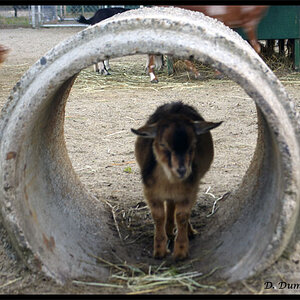
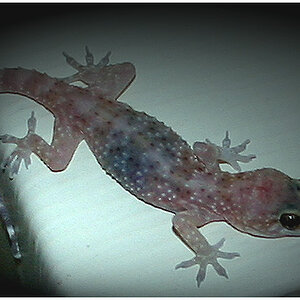
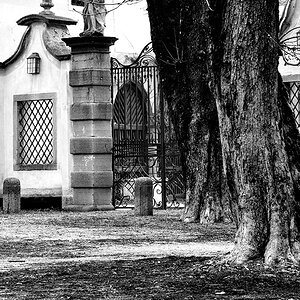
![[No title]](/data/xfmg/thumbnail/42/42066-badd1780980376f04f261f985a608adf.jpg?1619739998)
![[No title]](/data/xfmg/thumbnail/40/40307-b3813381d3c1ef8282c72905405b50fe.jpg?1619739413)
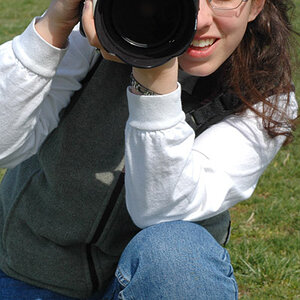
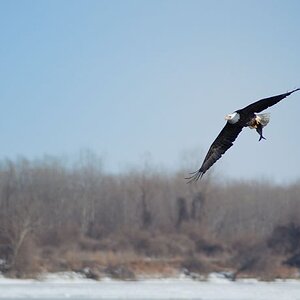
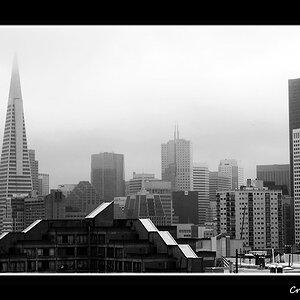
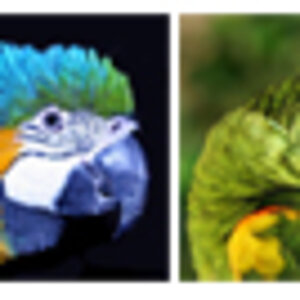
![[No title]](/data/xfmg/thumbnail/42/42270-4394b4f41a4b5d16152d8471f79ec2e4.jpg?1619740079)
